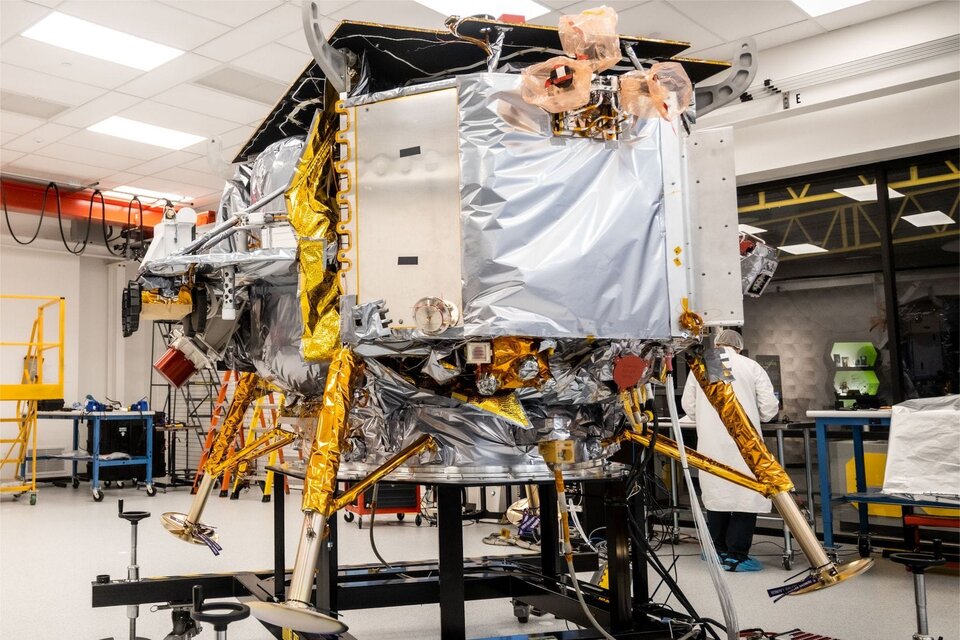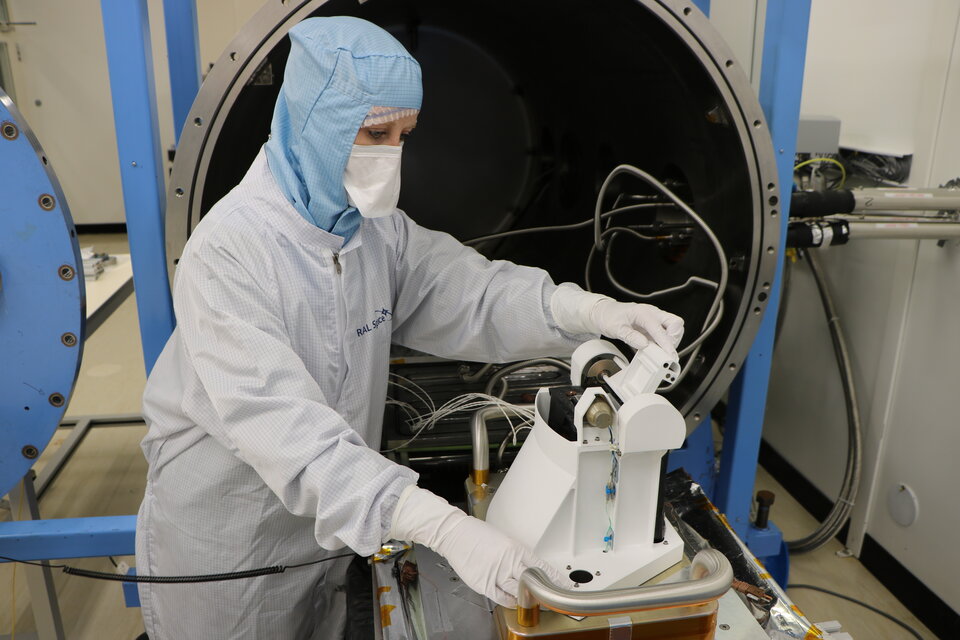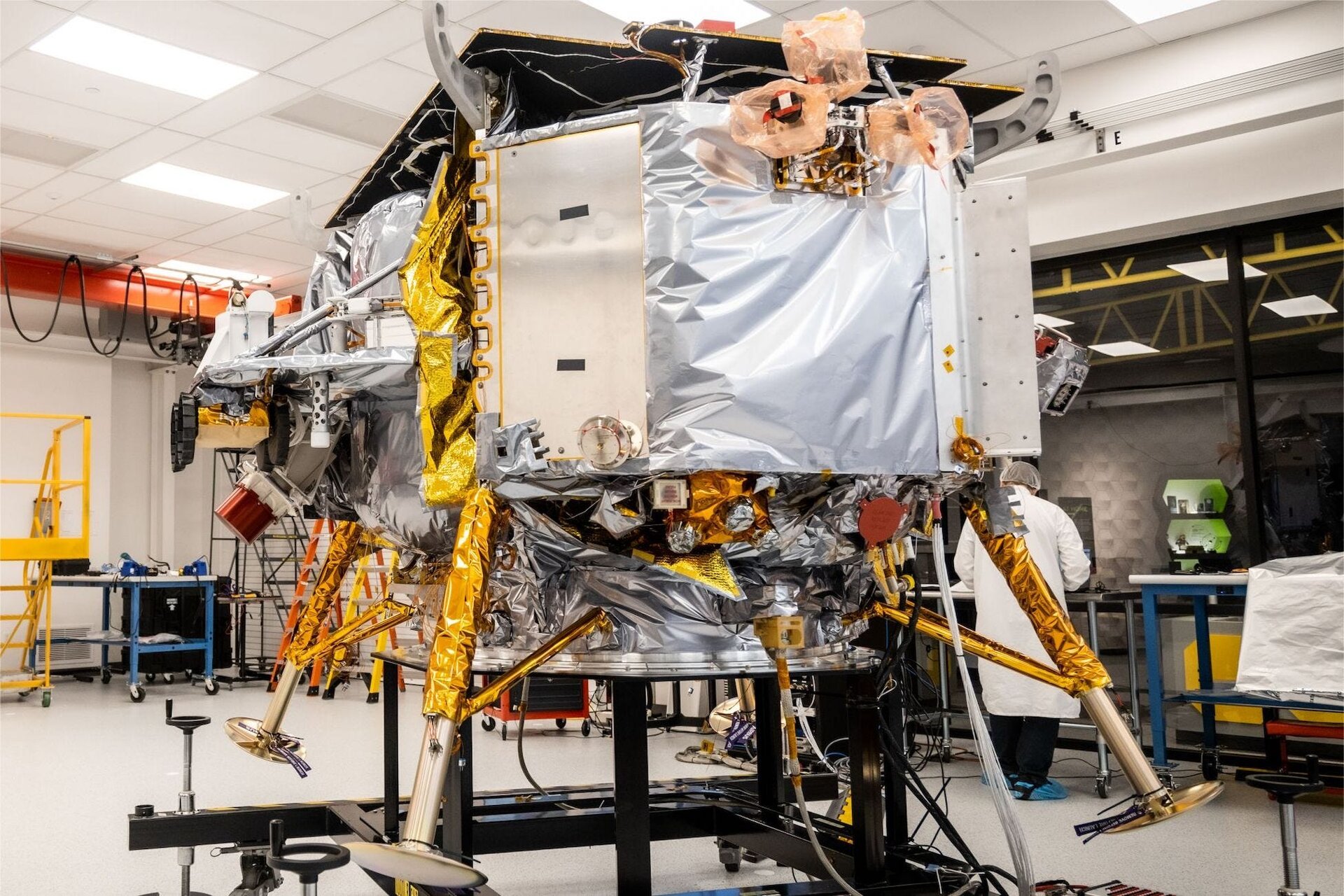PITMS: a mini mass spectrometer for the Moon
A device to sniff out the Moon’s scent is set for launch this year on an Astrobotic lunar lander, Peregrine. Our Moon doesn’t have an atmosphere like on Earth, but there are many particles buzzing around its surface in what scientists call an exosphere.
The Peregrine Ion-Trap Mass Spectrometer (PITMS) will sniff out molecules close to the Moon’s surface to chart the composition of the lunar exosphere.
A day on the Moon lasts two weeks on Earth, so the sunlight that hits the Moon causes many molecules to warm up and dissipate and interact with the solar wind as gases. These are the molecules that the lunar spectrometer will sniff out.

“With humankind’s quest to explore our Solar System using resources found locally, getting an overview of what resources are available on the Moon to be used for fuel, food or energy is extremely important, and this is where our spectrometer comes in,” says ESA’s Roland Trautner, exploration payload and operations engineer who manages the spectrometer development.
As the gases travel across the Moon, they may settle in the cold lunar polar areas, where there are places never reached by sunlight. This process may contribute to the presence of large amounts of water at the lunar poles; the water vapour freezes and settles and can accumulate over hundreds of millions of years. Understanding the sources of the water, and how much of it is available at and near the poles would benefit human explorers of the Moon in the future.
The mission

The Peregrine lander is aiming for a lunar touchdown in Sinus Viscositatis near the Gruithuisen volcanic domes, on the northern lunar hemisphere. It is the first time that a spacecraft will land in this area, and it will give the mass spectrometer a good overview of the exospheric molecules in a pristine location.
“We will be measuring the exosphere and the molecules flying around to learn where they come from,” continues Roland, “the data will also help understand the processes at work in our Solar System, and even aspects of the history of Earth and our natural satellite,”.
Once safely landed, a protective cover, developed by NASA’s Goddard Space Flight Center in Maryland, USA, will open to allow the spectrometer to start work. The opening of the spectrometer is pointing up to sniff out the clean ‘air’ on the Moon.
The spectrometer itself, developed by The Open University located in Milton Keynes, UK, and STFC RAL Space, UK’s national space lab, can record for much of a lunar day over the 240 hours the Peregrine lander will be operational. It will record the molecules over time, so scientists on Earth can see how the molecules and amounts vary during the time from lunar surface.
“PITMS will allow us to study how the lunar exosphere develops and evolves over a lunar day,” explains Simeon Barber, EMS science lead at Open University. “We will learn how the composition and density of the exosphere changes as the Sun heats the Moon’s surface, releasing molecules that may then continue their journey until they eventually get trapped at the cold poles. And we will also start to understand how the spacecraft itself affects the lunar environment by releasing vapours and gases, such that we can distinguish between natural and lander-induced phenomena.”
Ions, electric fields, electrodes, and electrons

The spectrometer is based on ‘ion trap’ technology, an ingenious device that allows researchers to identify and quantify sample atoms and molecules. Lunar molecules entering the sensor are bombarded by electrons from a heated filament to create ions. The ions are stored in an electric field formed by a set of precisely shaped electrodes. The ions are then released from this ‘trap’ in order of increasing mass-to-charge ratio into a detector. The time at which ions arrive at the detector indicates the mass and therefore the chemical identity of the ion, and the number of counts defines the concentration of these in the exosphere, resulting in a complete overview of the molecules on the Moon.
To perform these sensitive measurements, the sensor was assembled and kept in extremely clean conditions, that are kept clean until after landing.
“A mass spectrometer is a common instrument in laboratories on Earth, but they are generally as large as my office,” concludes Roland, “the engineers at The Open University and RAL Space have managed to shrink this down to a 1.6 kg device the size of half a shoebox and it uses as little electricity as a phone charger.”
The PITMS instrument is a collaboration between ESA and NASA’s Goddard Space Flight Center (NASA GSFC), USA, where ESA provided the Exospheric Mass Spectrometer that is at the heart of the PITMS instrument, and NASA GSFC provided structural, mechanical and thermal elements. The PITMS operations are led by Principal Investigator Barbara Cohen (NASA GSFC) with support from a science team selected by NASA and ESA.
Technical details:
Payload: Peregrine Ion-Trap Mass Spectrometer (PITMS)
Technology: Ion Trap Mass Spectrometer (ITMS)
Launcher: ULA Vulcan
Launch date: 8th January, 2024
Launch location: Cape Canaveral Space Force Station, Florida, USA
Lander: Peregrine
Landing site: Sinus Viscositatis, the Moon
Energy consumption: 4–12 W















 Germany
Germany
 Austria
Austria
 Belgium
Belgium
 Denmark
Denmark
 Spain
Spain
 Estonia
Estonia
 Finland
Finland
 France
France
 Greece
Greece
 Hungary
Hungary
 Ireland
Ireland
 Italy
Italy
 Luxembourg
Luxembourg
 Norway
Norway
 The Netherlands
The Netherlands
 Poland
Poland
 Portugal
Portugal
 Czechia
Czechia
 Romania
Romania
 United Kingdom
United Kingdom
 Slovenia
Slovenia
 Sweden
Sweden
 Switzerland
Switzerland

























